The main focus of this website is on the cultivation of the tuberous Drosera and on images of tuberous Drosera. I would like to share with you my experiences about how to grow tuberous Drosera and I would like to show you the pictures, which I took in the course of many years of these wonderful plants.
I hope you like this page. If you find mistakes or have suggestions or maybe you want to contribute information or pictures, then I would be happy if you contact me.
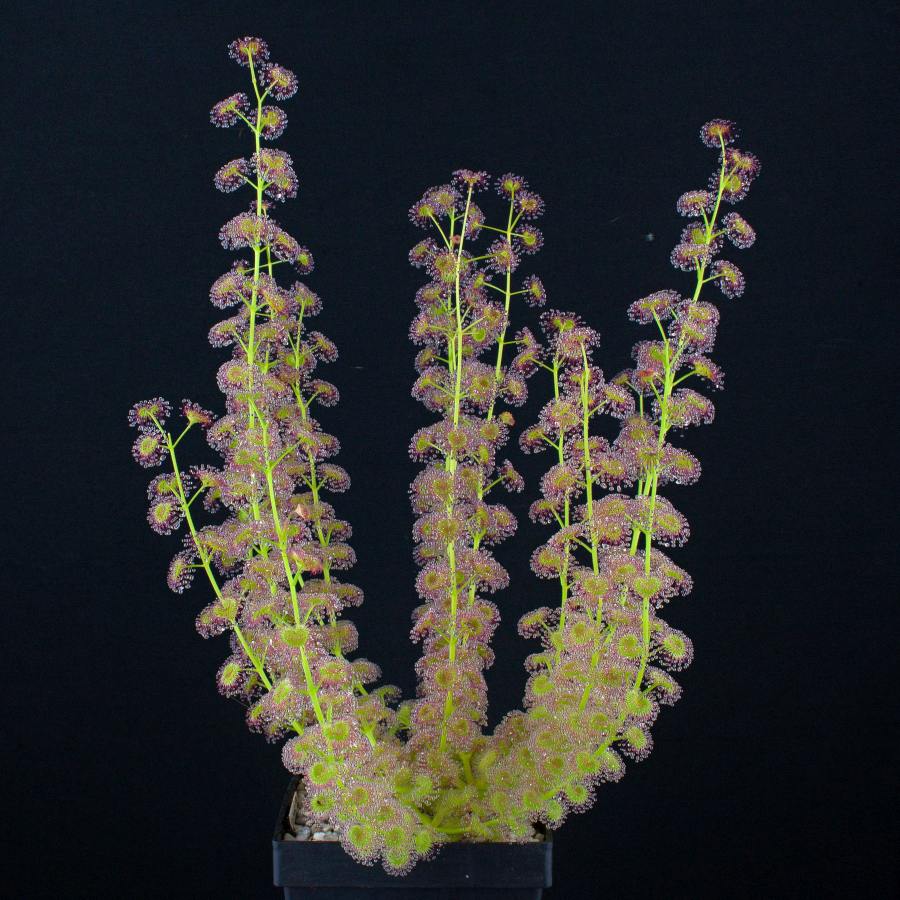
Pot of drosera stolinifera
Tuberous drosera are carnivorous plants that occur mainly in Australia, occasionally in New Zealand and some Asian countries. Like all Drosera, the plants live on very nutrient-poor soils. In Australia they live partly in pure sand or laterite soils.
Probably the most interesting characteristic of tuberous drosera is their ability to build subterranous tubers where they store energy and nutrients for the next growing season. The reason why plants have evolved in the course of evolution to retreat and form tubers is due to the climatic conditions in southern Australia. In this region there is a very hot and dry summer in which plants on the surface can hardly survive and a cool and humid winter. For this reason the plants retreat at the beginning of summer back into the soil, where they are protected from unfavourable environmental conditions and store the nutrients in a tuber for the next winter.
At the beginning I would like to show you the life cycle of tuberous drosera throughout the year.
The year begins with the tubers that survive deep in the earth the hot and very dry summer in Australia. When the temperatures become cooler and there are the first rains in the beginning winter, the tubers start to sprout. When the plants reach the surface, they start to form leaves and sooner or later flowers. They grow until the temperatures rise again and the conditions become dryer. Then the plants start to retreat back into the soil and form tubers again.
TubersI would like to start the growth cycle of tuberous drosera with the tuber. Depending on the species, the tubers are about 0.5 cm to about 3 cm (0.2 to 1.2 inches) in diameter when fully grown and can have different colours and slightly different shapes. Most tubers are more or less round, but some are oval shaped. At the top of the tuber there is the "eye". The eye is the point at which the plant will emerge again in the next year. Some tubers, especially the oval ones, tapering at the lower end. A typical example is are tuber from Drosera browniana.
On nearly all the pictures from tubers there is a grid for size comparsion. One square is 1 mm x 1 mm.
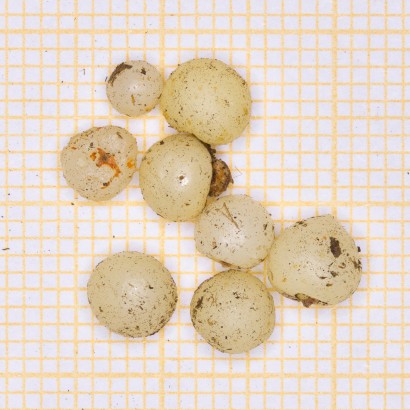
Drosera zigzagia
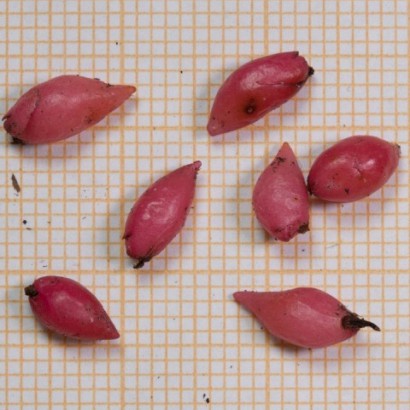
Drosera browniana
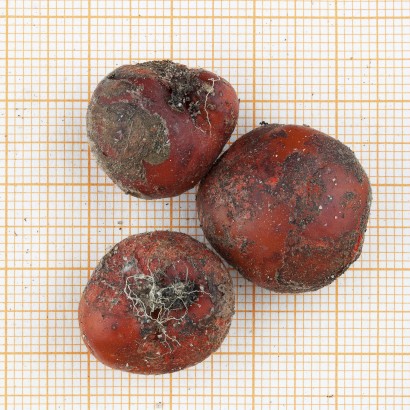
Drosera porrecta southern form
At the beginning of the wet, mild winter in south-western Australia, the plants begin to bud from the tubers and emerge above ground. There are small differences. Some species sprout a flowering stem first and flower before leaves are formed like drosera erythrorhiza, some form leaves and flowers at the same time and others form leaves first and flowers later in the season or at the end. There is also another difference in the upright species. Some first form a soil rosette and a little later, usually about a month later, when the rosette is fully developed, they do form the upright part of the plant. A good example for this is Drosera auriculata or Drosera andersonia.
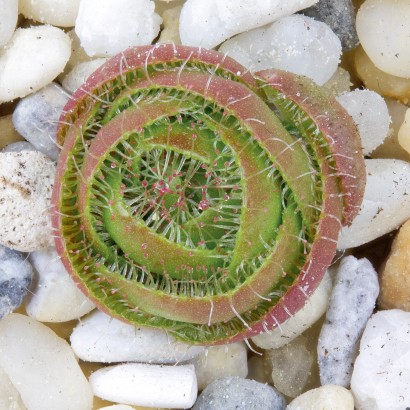
Drosera zonaria
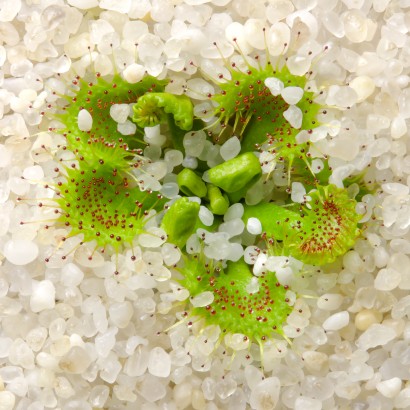
Drosera auriculata
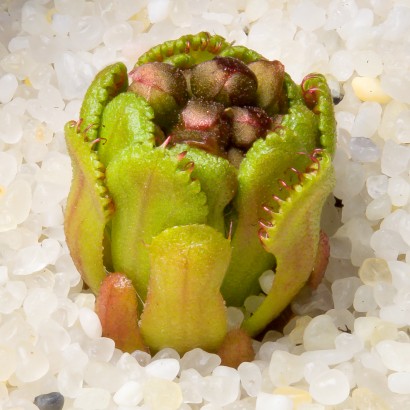
Drosera stolinifera
The time at which the flowers appear depends on the species. Some flowers appear at the beginning of the growth cycle, some in the middle and others almost at the end. The flowers of the tuberous drosera are quite large for the size of the plant and are extraordinarily beautiful. Some of the tuberous Drosera flowers, especially the ones with white flowers have very pleasant-smelling honey like aromas! The flowers usually have five petals but in some cases like Drosera heretophylla it can be up to 12. The colours of the flowers range from white or a dark pink and all colour variations in between. A few species also have yellow flowers like Drosera zigzagia or drosera subhirtella, and some species like Drosera macrantha have a very interesting stigma.
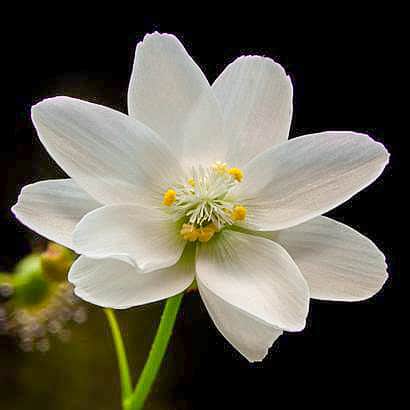
Drosera heterophylla
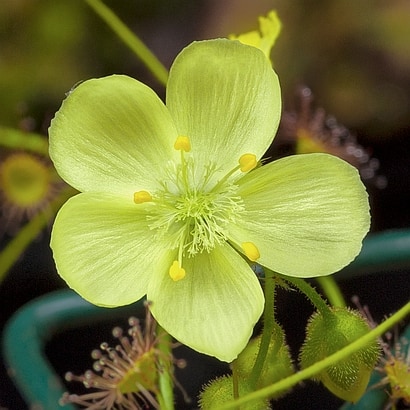
Drosera subhirtella
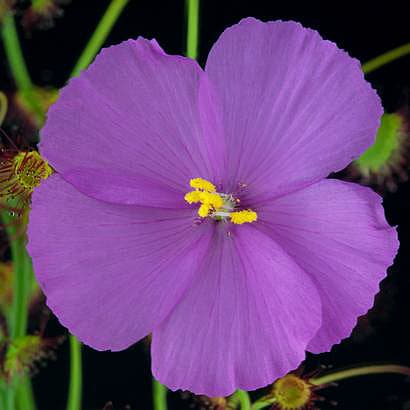
Drosera menziesii dwarf erect form
If the conditions for the plants are good, then they begin to grow above ground. The growth habit of tuberous Drosera can be very different. For example, some tuberous Drosera are very tiny (as small as some pygmy Drosera), while other species can reach over 1,5 m (4 feet) tall! Also, there are flat rosetted species that grow to 8 cm (3 inches) in diameter, in contrast to some species that develop thin, tall stems and look like a shrub!
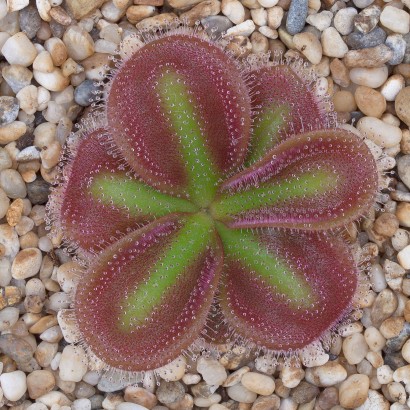
Drosera squamosa
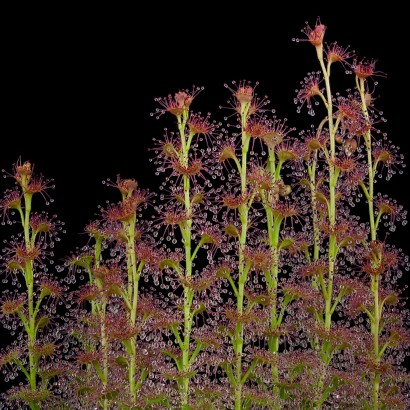
Drosera platypoda
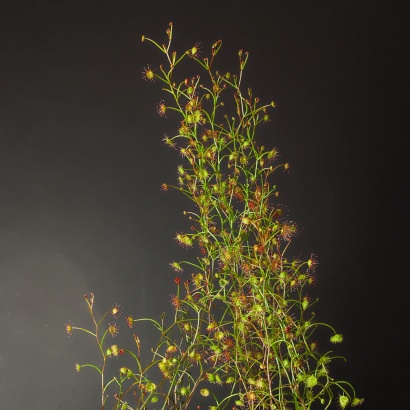
Drosera moorei
Because the plants cannot survive the very dry and hot summer in southern and western Australia, they pull themselves back into the earth and form one or more tubers. All nutrients that can be used for next year's growth are removed from the above-ground plant and transported downwards. What remains is a dried up plant. The process is very similar to that of the trees, which in the beginning of winter extracts nutrients from the leaves to store them in the roots for the next year.
There are also some very few species, such as drosera gigantea, which can grow under appropriate conditions all year round.
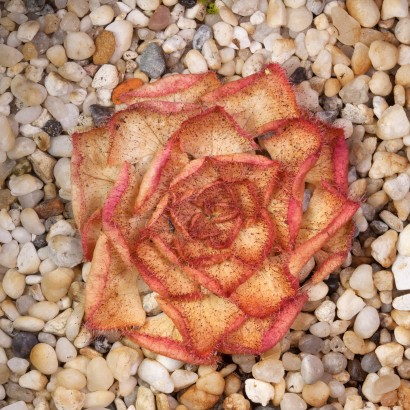
Drosera zonaria
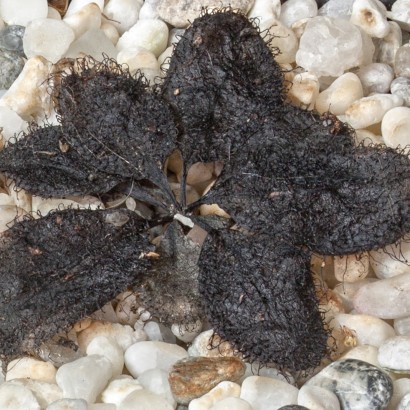
Drosera prostratosaposa
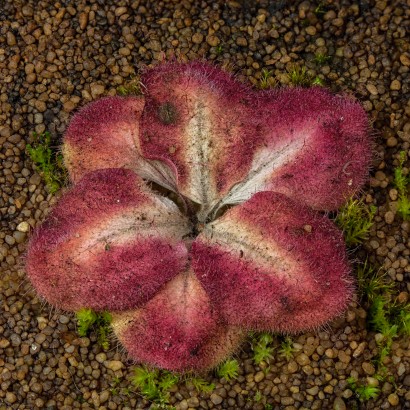
Drosera squamosa